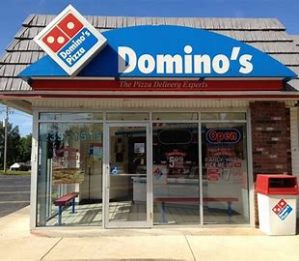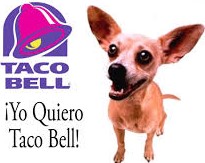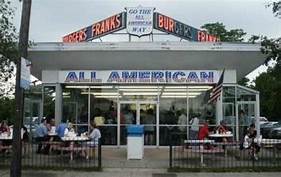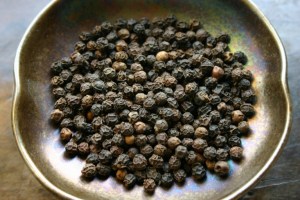When you pick up and move to a new town 1,500 miles from where you used to live, “getting the house in order” is a little overwhelming. Thirty years in the same spot creates a lot of favorite “thises” and preferred “thats”. So whenever my wife & I step away from the endless unpacking, we’re trying out supermarkets, large-animal vets (for the horses), and restaurants, to figure out which ones best replace those we chose time and time again in Colorado. And here’s what we’ve quickly discovered about life in the South (of the U.S.): good Mexican food is a tough ask.

Let’s take a bit of a detour. (Don’t worry; we’ll be back on the main highway before you know it.) In a surprisingly candid post from fellow blogger Brilliant Viewpoint, her recent trip to Rome and Florence determined pizza – at least the classic Italian version of the pie – is not what it used to be. The writer suggested the crusts are like cardboard, the mozzarella chunky and unappetizing, and the pizza itself a little soggy. Having spent a college year in Italy (when I survived on pizza and not much else), I found her conclusions shocking. Maybe this is why Domino’s – they of the generic-but-convenient home-delivered product in America – decided to give Italy a try? It’s true. In 2015, a Dominos franchise opened several stores across Italia to capture the then non-existent delivery market. It almost worked.
 No matter what the state of Italian pizza these days, Domino’s Pizza stores in this of all countries lands on my “you’ve got to be kidding me” list (alongside Starbucks coffee). Put yourselves in their shoes to understand the absurdity of it all. You’re an Italian. Pizza was invented in your country, which has thousands more years of history than America. You can choose from any pizzeria on any block of any street in your town and the homemade product will be excellent. Yet you’re going to call Domino’s to order a mass-produced American knock-off instead? At least Baskin-Robbins was sensible enough to stay away instead of going head-to-head with gelato.
No matter what the state of Italian pizza these days, Domino’s Pizza stores in this of all countries lands on my “you’ve got to be kidding me” list (alongside Starbucks coffee). Put yourselves in their shoes to understand the absurdity of it all. You’re an Italian. Pizza was invented in your country, which has thousands more years of history than America. You can choose from any pizzeria on any block of any street in your town and the homemade product will be excellent. Yet you’re going to call Domino’s to order a mass-produced American knock-off instead? At least Baskin-Robbins was sensible enough to stay away instead of going head-to-head with gelato.
You shouldn’t be surprised to learn – after a seven-year run – Domino’s Italian franchisee filed for bankruptcy in April. “Of course“, you say. “Their product just couldn’t compete.” Well, that’s not quite the story. It was more about pizza delivery itself. Remarkably, Italy had very little delivery before the pandemic. You wanted a pie back then, you went out into the streets and got it. But just like American restaurants, Italian pizzerias did whatever it took to survive the pandemic years, and that meant delivery to front doors. Domino’s thought they had the market cornered before they ever entered it. Next thing they knew, everyone else was doing the same thing.
 No matter the reason, I’m happy to say arrivederci to Domino’s Pizza in Italy. Franchise food doesn’t feel right in a country with so much history and wonderful local food. Shortly after my college year in the 1980s, I learned a McDonald’s restaurant somehow landed a lease at the base of Rome’s famous Spanish Steps. That’s like painting a mustache on the Mona Lisa. America has much to offer the world, but fast food is not our proudest accomplishment. I’m not even sure it’s an accomplishment.
No matter the reason, I’m happy to say arrivederci to Domino’s Pizza in Italy. Franchise food doesn’t feel right in a country with so much history and wonderful local food. Shortly after my college year in the 1980s, I learned a McDonald’s restaurant somehow landed a lease at the base of Rome’s famous Spanish Steps. That’s like painting a mustache on the Mona Lisa. America has much to offer the world, but fast food is not our proudest accomplishment. I’m not even sure it’s an accomplishment.
 Let’s get back to the main highway now. Up top we were talking about Mexican food… er, the lack of it, in the American South. It’s true, if our new little town is any indication. Yes, we have several options to beat a sit-down at Taco Bell, but they’re only a whisper better. Everything looks and tastes so generic. What should be salsa roja inside of enchiladas tastes more like pizza sauce. What should be a margarita with the sublime afterbite of tequila tastes like syrupy lemonade. The chips might as well be Doritos. Yet you look around and the restaurant is packed. These people don’t know what they’re missing, but they seem happy enough. As a result, just like Dominos, I don’t expect a Mexican restaurant from outside of the region to waltz into town and do well.
Let’s get back to the main highway now. Up top we were talking about Mexican food… er, the lack of it, in the American South. It’s true, if our new little town is any indication. Yes, we have several options to beat a sit-down at Taco Bell, but they’re only a whisper better. Everything looks and tastes so generic. What should be salsa roja inside of enchiladas tastes more like pizza sauce. What should be a margarita with the sublime afterbite of tequila tastes like syrupy lemonade. The chips might as well be Doritos. Yet you look around and the restaurant is packed. These people don’t know what they’re missing, but they seem happy enough. As a result, just like Dominos, I don’t expect a Mexican restaurant from outside of the region to waltz into town and do well.
 My theory on good Mexican food goes like this: the further west and south you go the better it gets. Colorado and Tex-Mex trump anything east of the Mississippi. Arizona and Southern California fare trump Colorado and Texas. In other words, my favorite Mexican place in my new hometown is destined to be close to my front door. In fact, it’s inside my front door. It’s my kitchen. Time to start making my own margaritas and enchiladas.
My theory on good Mexican food goes like this: the further west and south you go the better it gets. Colorado and Tex-Mex trump anything east of the Mississippi. Arizona and Southern California fare trump Colorado and Texas. In other words, my favorite Mexican place in my new hometown is destined to be close to my front door. In fact, it’s inside my front door. It’s my kitchen. Time to start making my own margaritas and enchiladas.
Some content sourced from the CNN Business article, “Domino’s tried to sell pizza to Italians…”, and the Brilliant Viewpoint blog.


















